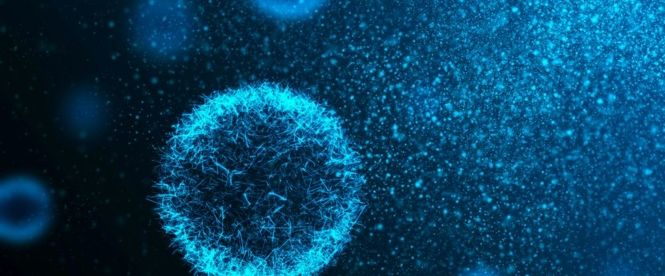HOW DANGEROUS ARE THEY?
It’s worrying that there isn’t completely germ-free drinking water. Research refers to all pathogenic micro-organisms such as bacteria, fungi, viruses and parasites, that could potentially endanger our health. However, and this again seems reassuring, health risks only occur when certain types of bacteria are detected in increased concentrations in drinking water. However, this is more often the case than previously thought. Because some types of bacteria that are harmful to health, such as legionella, often only form in supply lines and house lines. There, they can actually form in quantities that are health concerns and can cause serious illnesses.
WHICH BACTERIA ARE FOUND IN OUR DRINKING WATER?
In a single glass of drinking water there are millions of invisible microorganisms, spread over thousands of different genera and species, which are not necessarily harmful to health. It has long been known that so-called good bacteria in our own body perform important functions for maintaining our immune system and a healthy metabolism.
The good and useful bacteria of our body represent a natural barrier against bacterial enemies. The body’s own bacteria deprive the invaders of the nutrients, so they lack the basis for their own reproduction. In other words, a single bacterium does not yet pose a threat. But when it occurs in whole colonies, it can get tricky. In addition to legionella, which is known as a dangerous pathogen, enterococci and coliform bacteria are feared as the cause of diarrhoea.

HOW CAN I FIND OUT FOR MYSELF WHICH BACTERIA ARE IN MY DRINKING WATER?
When it comes to the potential contamination of drinking water with bacteria and germs, the focus should be on all potentially disease-causing bacterial species that feel very comfortable in water or need moisture as a breeding ground for their reproduction. These transferred to humans due to a lack of hygiene when processing food of animal origin. Potentially, they can also enter the drinking water supply cycle directly via contaminated surface and groundwater.
The good news: You can order a water test yourself, at any time. There are numerous suppliers who carry out laboratory analysis on submitted water samples.

WHAT DANGER DOES GERMS AND BACTERIA IN DRINKING WATER POSE TO US?
The greatest danger comes from germs that remain undetected at first or only come into the public interest when it is already too late. The health authorities will endeavor to provide appropriate information and remedial action if there are frequent symptoms of the disease in a water supply area.
Filter systems are usually used in accordance with the latest technical standards. When surface water is used for supply, there is a potential risk of contamination, by agricultural faeces or other unpredictable environmental influences. One of the cleaning processes in a waterworks is the disinfecting oxidation of the water in order to ensure a bacteriologically flawless quality. But when the water leaves the plant, it is exposed to the influences of the piping system, where disease-causing bacterial colonies can accumulate and become a problem.
The greatest threat today is the so-called Legionella formation. Legionella can cause a disease such as Pontiac fever or even the dangerous, name-giving Legionnaires’ disease, which can sometimes be fatal. What is very worrying is that this type of bacteria feels particularly comfortable at a water temperature of 20-55 degrees Celsius and increases to disease-causing amounts under such conditions. Beyond this temperature zone, legionella dies. But in the warm months of the year, when many homeowners like to shut down their hot water storage facilities or shut down water heaters altogether to save energy, there is an increased risk of Legionella. Generally, standing, stale and, on top of that, lukewarm water is considered the ideal breeding ground for the propagation of germs.

WHAT CAN I DO AGAINST BACTERIA IN DRINKING WATER?
In a household, it sometimes takes a very long time for the drinking water to cool down sufficiently to ensure sufficient protection against this pathogen. In summer, it may not reach a temperature below 20 degrees, even after a long run. Only filter systems for cleaning water provide sufficient protection. However, these must then be equipped with the process technique of reverse osmosis.

LUQEL WATER STATION
The LUQEL Water Station can filter pollutants from water in addition to bacteria and germs through the thorough process of reverse osmosis.

